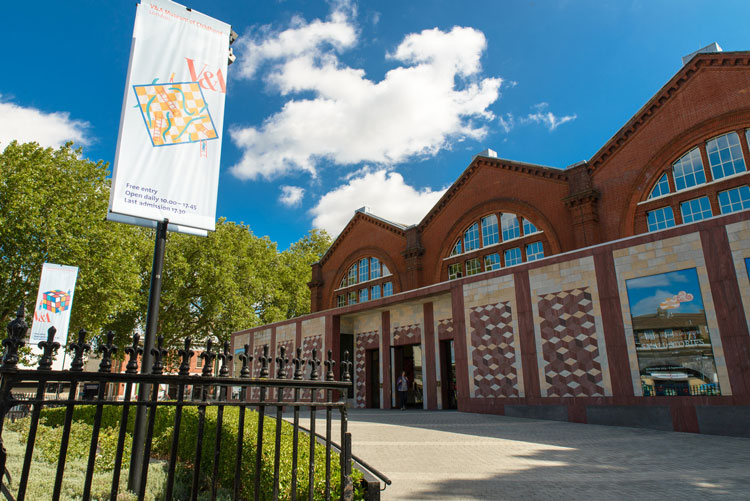5 important things that happened in design this week
Stories of sexism in the industry, a £200,000 interiors redesign for the V&A Museum of Childhood and a nostalgic look at magazine The Face – the news from the last seven days.
We looked at sexism and sexual harassment in design

Exposure of sexual harassment in the workplace have been rife in recent months, starting with the stream of allegations made against Hollywood film producer Harvey Weinstein, which has now amounted to over 50 women’s testimonials.
This was followed by a Westminster sexual harassment scandal, which saw several male MPs under fire and some resign.
This week, we spoke to female designers about their experiences of encountering sexism in their careers. As Sarah Weir, CEO at Design Council, put it, these span a wide spectrum, from “having [her] voice ignored until a man has made the same point” to “unwanted sexual advances from those in power”.
In an exclusive piece, Design Week columnist Nat Maher, and founder of design gender equality group Kerning the Gap, also wrote about countless, anonymous instances of women’s experiences of sexual harassment in industry, calling it a “nasty parasite never discussed”.
Her piece ends with a call for more support networks within the industry, and Maher implores female designers who feel harassed to “find someone, a mentor, someone you trust” to talk to, adding the caveat that designers can come to her for help and advice too. Maher can be reached through the Kerning the Gap website.
Freelance designers shared advice on being successful

Managing your own taxes and expenses, ensuring you are earning enough to make ends meet, retaining creative freedom; being a freelancer can be tricky.
This week, we asked prolific freelance designers and illustrators including Ben Tallon and Emily Forgot to impart their advice on how to be successful.
Forgot implored budding freelancers to “take advantage of quiet periods to explore and develop self-initiated projects”, while Alan Long warned them to “be wary of working for little money on the promise of future work – no matter how sincere [clients] may seem.”
Read our piece in full here.
A new book delved into ‘80s and ‘90s magazine The Face

The Face was a popular youth culture magazine in the 1980s and 1990s, which saw cover and feature stars including Blur’s Damon Albarn and the late Kurt Cobain, and was famously designed by Neville Brody. The mag eventually met its demise in the 2000s after founder Nick Logan sold it in 1999.
A new book, written by author Paul Gorman, explores the rise and fall of the magazine, and the impact it made on culture of its era.
This week, we spoke to Gorman about the magazine’s enduring influence, its Brody-influenced design style and its place in the Design Museum’s permanent collection.
Read our interview in full here.
V&A Museum of Childhood announced it was looking to completely redesign its interiors

The Victoria and Albert (V&A) Museum of Childhood put out a £200,000 tender this week for a redesign of its interiors.
The museum, which is based in East London and showcases over 35,000 objects related to childhood dating back to the 16th century, is part of the V&A Museum group, sitting alongside the V&A Museum in South Kensington.
The museum requires a design team to “develop full shell and core design, including structural, mechanical engineering, heritage, lighting and acoustic schemes”, the tender says.
Interested design teams can apply here.
The UK Government pledged to increase the number of international creative and tech workers

The UK Government has been under fire from the creative industries and academics the last few years for focusing on STEM (science, technology, engineering and maths) subjects and research, and neglecting the arts.
There has also been anxiety around potential loss of creative talent following the UK’s departure from the European Union (EU), due to happen in March 2019.
This week, the Home Office pledged to double the number of visas given to international people employed in the creative and tech sectors. This includes those living in overseas countries but not the EU.
This increases international visas from 1,000 to 2,000, and will include the digital tech, science, arts and creative sectors, according to the Home Office.
These visas will be given out to five industry bodies – Tech City UK, Arts Council England, The British Academy, The Royal Society and the Royal Academy of Engineering – which will distribute them to individuals as they see fit.
However, a spokesperson at the Home Office has said that the visas will be distributed to the sectors with the “greatest need” for them, rather than equally, with Tech City UK and digital tech in general expected to receive more than art and culture.
The new visa allowance is due to come into place in 2018.
Got a design story? Get in touch sarah.dawood@centaurmedia.com.
-
Post a comment




